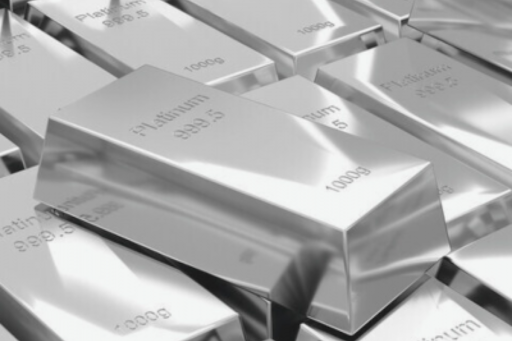Platinum, a precious metal known for its rarity and industrial applications, plays a significant role in the global economy. Its spot price, which refers to the current price for platinum per ounce for immediate delivery, is a crucial indicator for investors, jewellers, and industrial users. This blog aims to provide an in-depth understanding of the platinum spot price, its influencing factors, and its importance in various markets.
1. What is the Platinum Spot Price?
The platinum spot price is the price at which one ounce of platinum can be bought or sold for immediate delivery. Unlike futures prices, which are set for delivery at a later date, the spot price reflects the current market conditions. This price is determined by trading activities on major exchanges such as the New York Mercantile Exchange (NYMEX) and the London Metal Exchange (LME).
2. Historical Context of Platinum Prices
Historically, platinum has been more valuable than gold, primarily due to its scarcity and extensive industrial uses. However, its price has seen significant fluctuations due to various economic factors, geopolitical events, and shifts in industrial demand. Understanding these historical trends can provide valuable insights for predicting future price movements.
Key Historical Milestones:
- Early 2000s: Platinum prices surged due to high demand from the automotive industry for catalytic converters.
- 2008 Financial Crisis: Prices plummeted as industrial demand dropped sharply.
- 2010s: Recovery was slow, with prices stabilizing but remaining below their pre-crisis peaks.
3. Factors Influencing Platinum Spot Prices
Several factors influence the spot price of platinum, including:
Industrial Demand
Platinum is widely used in automotive catalytic converters, which reduce harmful emissions. Changes in automotive production and environmental regulations significantly impact platinum demand and prices.
Mining Supply
Platinum is primarily mined in South Africa and Russia. Any disruptions in mining operations, such as labour strikes or political instability, can affect supply and, consequently, spot prices.
Economic Indicators
Global economic health influences industrial demand for platinum. Economic growth typically leads to increased demand for automobiles and industrial goods, boosting platinum prices. Conversely, economic downturns can reduce demand and lower prices.
Geopolitical Events
Political instability in key mining regions can lead to supply disruptions. Additionally, international trade policies and sanctions can affect the global supply chain, influencing prices.
Investment Demand
Platinum is also an investment commodity. Changes in investor sentiment, influenced by economic forecasts, inflation, and currency fluctuations, can drive investment demand, impacting spot prices.
4. How to Track Platinum Spot Prices
Investors and industry professionals can track platinum spot prices through various platforms:
Financial News Websites
Websites like Bloomberg, Reuters, and CNBC provide real-time updates on platinum prices, along with market analysis and news that can affect prices.
Metal Exchanges
Major exchanges like the NYMEX and LME offer live price feeds and historical data on platinum prices.
Investment Platforms
Brokerage accounts and investment platforms often provide tools for tracking and analyzing precious metal prices, including platinum.
5. Investing in Platinum
Investing in platinum can be done through various instruments:
Physical Platinum
Investors can buy physical platinum in the form of bars, coins, and jewelry. This type of investment involves storage and insurance costs but provides a tangible asset.
Platinum ETFs
Exchange-traded funds (ETFs) that track the price of platinum offer a convenient way to invest without the need for physical storage. ETFs can be bought and sold like stocks, providing liquidity and ease of access.
Platinum Futures and Options
Futures and options contracts allow investors to speculate on future price movements of platinum. These instruments can be complex and carry higher risk, suitable for more experienced investors.
Platinum Mining Stocks
Investing in companies involved in platinum mining and production is another way to gain exposure to platinum prices. These stocks can provide leverage to platinum price movements but also involve company-specific risks.
7. Future Outlook for Platinum
The future of platinum prices will be shaped by several factors:
Technological Advancements
Advancements in technology, such as the development of fuel cells and renewable energy systems, could increase demand for platinum.
Environmental Regulations
Stricter environmental policies and regulations will likely boost demand for platinum in automotive and industrial applications.
Economic Recovery
Global economic recovery post-pandemic could lead to increased industrial activity and higher platinum demand.
Conclusion
Understanding the platinum spot price is essential for anyone involved in the precious metals market. Whether you are an investor, a jeweller, or a manufacturer, staying informed about the factors influencing platinum prices can help you make better decisions. With its diverse applications and historical significance, platinum remains a valuable asset in both industrial and investment portfolios.
As the global economy evolves and new technologies emerge, the demand for platinum will continue to fluctuate. By keeping an eye on market trends and economic indicators, investors can navigate the complexities of the platinum market and capitalize on opportunities as they arise. Whether through physical investments, ETFs, or mining stocks, platinum offers a unique and potentially lucrative addition to any investment strategy.


